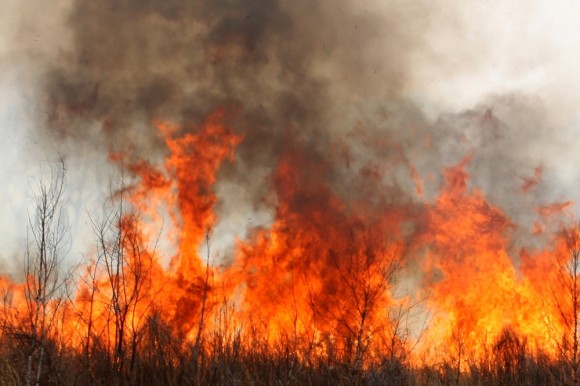While the number of burned acres in 2019 is still well below the number reported last year through October, experts predict the greatest fire potential will occur from now through December as the Santa Ana winds pick up, A.M. Best said in a commentary issued on Thursday.
“As of Oct. 28, northern California’s Kincade Fire has burned over 66,000 acres in Sonoma County and was only 5 percent contained,” the commentary states. “The wildfire has destroyed or damaged over 100 structures, with more expected. Meanwhile, in southern California, the Getty Fire poses a threat to an estimated 10,000 residential and commercial structures.”
Catastrophe modeler CoreLogic on Wednesday showing roughly 1,470 structures within the perimeter of three wildfires representing a total reconstruction value $550 million. An earlier report shows damages from the fires in numerous spots across California stand at $25.4 billion.
Along with the wildfires have come seemingly endless planned power outages to prevent such fires, putting millions of Californians in the dark. Moody’s published a new report over the weekend on California’s public safety power shutoffs and the impact of ESG risks on credit.
“The California wildfires illustrate how considerations of environmental, social and governance risk are connected and how they affect credit,” the Moody’s report states. “Environmental risk remains high, as the effect of climate change manifests itself in higher water and heat stress. Over the coming years, wildfire risk is likely to get worse and will drive changes in social risk. Governance considerations are also rising in prominence, as we see differences in how utility companies maintain their infrastructure.”
The A.M. Best commentary notes that insurers have taken extra steps to manage their exposure to the peril, using stricter underwriting practices for new business with identified wildfire exposure and reducing risk concentration in wildfire-prone areas.
More E&S carriers have entered the market, and A.M. said the California FAIR plan (the last-resort insurer) may have to step in.
On the other hand, A.M. Best said that catastrophe modeling techniques for wildfire remain less sophisticated than for hurricanes and earthquakes, and some of these wildfires are occurring in areas classified as low to moderate risk.
A.M. Best noted that much of the marketshare in California is held by larger national companies with significant capital to manage the peril.
But the ratings agency said it expects to “see an uptick in reinsurance pricing in loss-affected areas, which would result in higher reinsurance costs for primary carriers, as well as a tightening of terms and conditions.”
Related:
- Another $550M in Properties at Immediate Risk in 3 California Blazes, Report Shows
- PG&E Power Shutoffs Hit 2.7M as California Wildfires Burn
- 500K-Plus Californians Lose Power; Large Wildfire Rages
Topics Catastrophe Natural Disasters California Carriers Wildfire AM Best
Was this article valuable?
Here are more articles you may enjoy.



 Good Times for US P/C Insurers May Not Last; Auto Challenges Ahead
Good Times for US P/C Insurers May Not Last; Auto Challenges Ahead  Cloudy Future for Bourbon Has Jim Beam Closing Distillery for a Year
Cloudy Future for Bourbon Has Jim Beam Closing Distillery for a Year  High-Net-Worth Risk Appetite Drops as Some Regions Show Stabilization
High-Net-Worth Risk Appetite Drops as Some Regions Show Stabilization  CRC Group Signs Agreement to Acquire Euclid Transactional
CRC Group Signs Agreement to Acquire Euclid Transactional 

